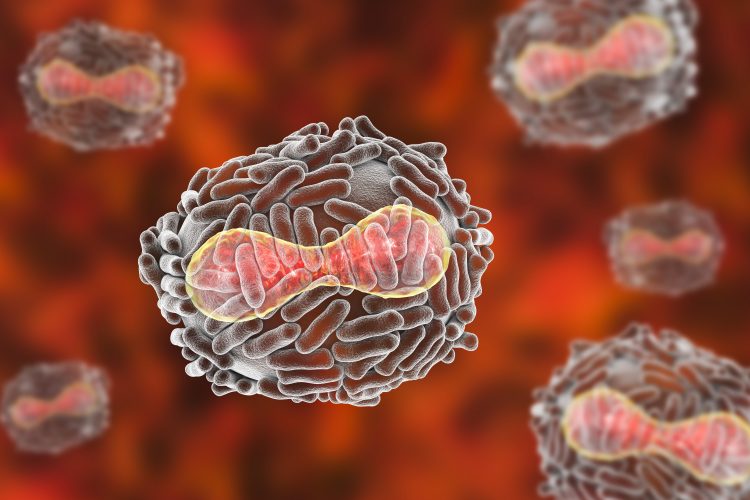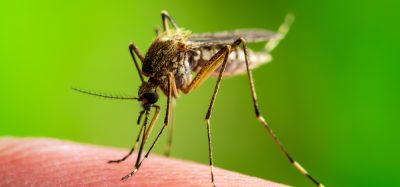Lethal poxviruses could be rendered harmless with single gene removal
Posted: 21 September 2020 | Hannah Balfour (Drug Target Review) | No comments yet
Researchers report that removing the vSLFN gene from the ectromelia virus (ECTV) caused a potent immune response which protected animal models.


According to a new study, removing one gene from poxviruses renders them harmless. Poxviruses are a potentially lethal family of viral infections known for zoonosis (spreading from animals to humans).
In their study, scientists from the Spanish National Research Council and the UK’s University of Surrey investigated the immune response of cells to poxviruses. Poxviruses, such as horsepox, cowpox and monkeypox, can spread to humans from infected animals, causing skin lesions, fever, swollen lymph nodes and death.
Viruses infect host cells with their genetic material in order to replicate and spread through the organism. Cells within the body have molecules that can sense the presence of a virus, sometimes via the recognition of their genetic material, and alert the immune system of an upcoming infection. In order to overcome these mechanisms, which would result in the death of the host cell – and by connection the virus – within the viral genome are genes which allow viruses to evade detection by host cells. Poxviruses are highly unusual in that they have large DNA genomes that are replicated exclusively in the cell cytosol, an area of the cell full of sensors. But how poxviruses manage to stay undetectable in this environment has remained unknown.
Biomarkers aren’t just supporting drug discovery – they’re driving it
FREE market report
From smarter trials to faster insights, this report unpacks the science, strategy and real-world impact behind the next generation of precision therapies.
What you’ll unlock:
- How biomarkers are guiding dose selection and early efficacy decisions in complex trials
- Why multi-omics, liquid biopsy and digital tools are redefining the discovery process
- What makes lab data regulatory-ready and why alignment matters from day one
Explore how biomarkers are shaping early drug development
Access the full report – it’s free!
In their study, the scientists experimented with ectromelia virus (ECTV), a member of the poxvirus family that causes mousepox and resembles human smallpox. ECTV spreads through the lymphatic system of mice to vital organs, where replication of the virus takes place, resulting in the rapid death of the animal.
During the study, the team identified a gene called viral Schlafen (vSLFN), which was found to silence the cellular response to the viral genome. They highlighted that disabling this one gene made the infection detectable, triggering a potent immune response that protected animals against doses one million times higher than the regular lethal quantity.
Following the removal of vSLFN, it was found that animals with the modified virus were protected from subcutaneous, respiratory and intravenous infection and all survived. Scientists also found that the protection was mediated by interferon (IFN), an anti-viral molecule, and natural killer (NK) cells, which play a major role in the host-rejection of virally infected cells.
The researchers said they believe their findings will shed light on how we combat microbial infections and improve the efficacy and safety of vaccines, anti-cancer agents and gene therapies that are based on poxviruses.
Dr Carlos Maluquer de Motes, Senior Lecturer in Molecular Virology at the University of Surrey, said: “Viruses, although minuscule, are very complex agents with very sophisticated strategies contained in their genetic material. But it is also this same genetic material that makes them vulnerable to cell recognition. The removal of vSLFN gene protected animal against mousepox and we believe that that we may see the same results for other poxviruses.
“Our findings reveal the importance of activating the molecules responsible for the detection of the genetic material of microbes in the fight against viruses. In addition, they also suggest that mimicking the action of vSLFN may be a valid strategy to prevent auto-inflammatory and autoimmune diseases that are caused when the genetic material of cells is sensed by the immune system, promoting a reaction.”
The study was published in Science Advances.
Related topics
Disease Research, Drug Targets, Genomics, Immunology, In Vivo
Related organisations
Spanish National Research Council, University of Surrey
Related people
Dr Carlos Maluquer de Motes








